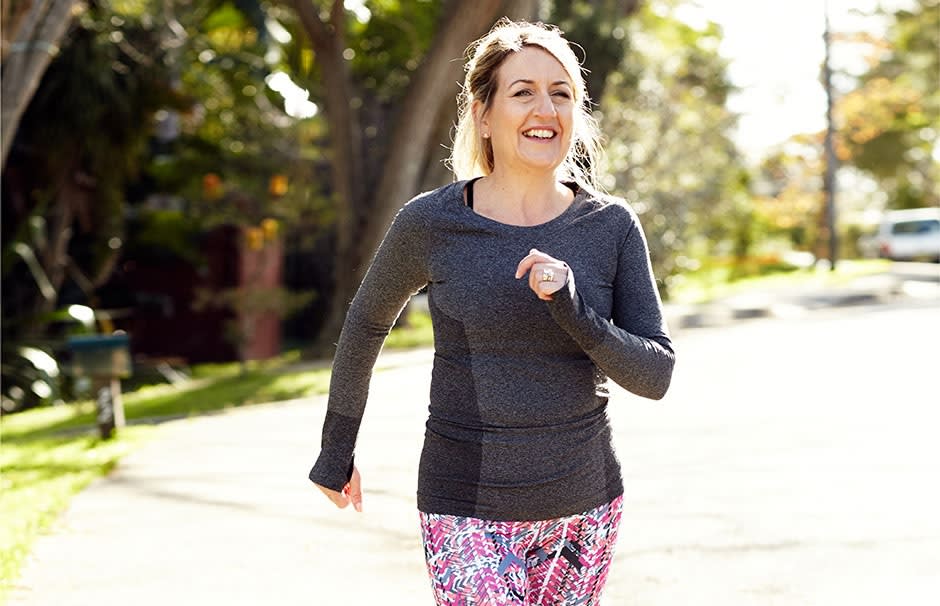7 Winter fitness tips


How to stay active this witner
Staying active over winter is one of the best things you can do for yourself – and not only because it will keep you on track to your health and wellness goals. “We get a large number of benefits from physical activity such as improved heart health and a lower risk of chronic illness, as well as mental health and wellbeing,” says Dr Michael Baker, senior lecturer in clinical exercise physiology at the Australian Catholic University. “Sadly, many of these benefits begin to disappear if we don’t continue to be active.” But keeping up your physical activity in winter doesn't need to be hard. Here are seven simple strategies you can try.
1. Find an indoor team sport
“If there are team sports you want to try, or get back into, winter is the season to do it,” says Dr Baker. “Many indoor sports centres have netball, soccer and cricket with women’s, men’s and mixed teams.”
Other good indoor options are dance classes or the gym. “Choosing an indoor activity eliminates one of the most common winter exercise excuses – the weather,” says Exercise Physiologist Neil Russell. To keep yourself accountable, he suggests taking up a 10 sessions class-pass at a gym or booking and paying for a trainer in advance.
2. Mix up your routine
If you’re struggling to crawl out of bed for your early morning walks, don’t force yourself – try something different.
“Switching up your exercise routine can help keep you motivated through the colder months. Pick activities that are easy to fit into your lifestyle and fun to do” says Russell. “I think it’s a great idea to switch up your routine regularly throughout the year anyway, otherwise you may reach a plateau in your fitness.”
Swapping a morning walk for a lunchtime boxing class, or your outdoor swim for a weights circuit won’t just help you cheat the cold and the dark – you’ll also be using different muscles and kicking your metabolism up a gear, which can help you bust through a plateau. That’s a win-win, we’d say.
3. Get active outdoors
Of course, the great outdoors has its advantages in winter, too – it’s not baking hot in the middle of the day, so you can walk or jog during your lunch break without fear of sunburn or perspiration.
“If you don’t mind the winter weather, then Oztag and five-a-side soccer are also very popular options,” Dr Baker says. It’s particularly worth getting outside if you’re prone to the winter blues. A study conducted by the University of Essex in the UK, found that ‘green exercise’ strolling through a park, for example – gives you a significant mood boost after as little as five minutes.
4. Enlist a buddy to get active with
Remember back to your youth when you’d head out with friends to do something you loved – regardless of the weather? So channel that approach now. “If you find being active in winter tough, hold yourself accountable by doing it with a friend or a group,” says Russell.
Make exercise part of your social life and go to Zumba classes together, try indoor rock climbing or join a dragon-boat racing team. Winter is a great opportunity to shop around and find what you love.
5. Warm up before exercising
Whether you’re heading out or staying in, warming up before exercise is even more important in winter. “Cold weather may make us a bit more susceptible to muscle strains,” Dr Baker says. “The best kind of warm-up is a dynamic one, which focuses on a gradual build-up in speed and intensity. So if you’re going out for a run, start with a walk, then increase to a brisk walk, then a jog, slow down to do some lunges, go back to a jog, then get on with your run.”
As well as helping to prevent injury, warming up helps to activate your muscles so you can get the most out of exercise – and it feels great.
6. Find your motivation
Motivation can dry up fast at this time of year, so give yourself a powerful incentive to carry on. ‘I want stronger arms’ might sound fairly convincing, but psychological research shows that extrinsic, or appearance-based motivators like that simply don’t cut it. Instead, try to find something that speaks to you at a deeper, emotional level. ‘I want to be fit enough to play soccer with my daughter when she’s older’ or ‘I’d love to do a seven-day trek with friends – and not be the one everyone has to wait for’ are good intrinsic reasons that’ll get you into your workout gear and out the door.
7. Stay hydrated
It might be chilly out, but you’ll still sweat during workouts, so take a water bottle with you and sip from it before, during and after physical activity. Even mild dehydration can cause fatigue, headaches, trouble concentrating and mood changes. And don’t forget to look after your skin too, by moisturising after you work out. Cold air and heated gyms can dehydrate you.